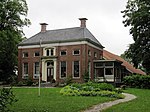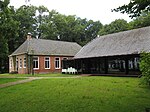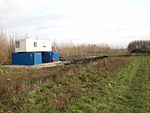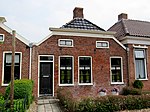Veldkamps Meuln
1855 establishments in the Netherlands19th-century architecture in the NetherlandsBellingwoldeFlour millsGrinding mills in the Netherlands ... and 5 more
Pages with Dutch IPARijksmonuments in Groningen (province)Tower mills in the NetherlandsWindmills completed in 1855Windmills in Groningen (province)

Veldkamps Meuln (Dutch pronunciation: [ˈvɛltkɑmps møːln]; English: Veldkamp's Mill) is a 19th-century tower mill in the village of Bellingwolde in the Netherlands.
Excerpt from the Wikipedia article Veldkamps Meuln (License: CC BY-SA 3.0, Authors, Images).Veldkamps Meuln
Molenlaan, Westerwolde
Geographical coordinates (GPS) Address External links Nearby Places Show on map
Geographical coordinates (GPS)
| Latitude | Longitude |
|---|---|
| N 53.1258 ° | E 7.1716 ° |
Address
Veldkamps meul'n
Molenlaan
9695 AX Westerwolde
Groningen, Netherlands
Open on Google Maps











